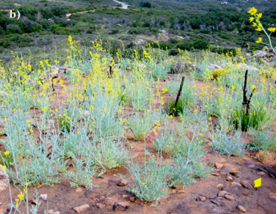Prioritizing planting effort and heterogeneity in reforestation: Research Brief
/In light of climatic trends, historic fire suppression, increasing incidence of large wildfires, and shrinking budgets, the authors propose a planting strategy that prioritizes accessibility, while reducing efforts within the dispersal range of seed trees and in areas with a high cost to probability-of-success ratio.
View Research Brief PDF >























